It wouldn’t be a summer holiday without a hastily sent postcard that arrives home a few days after you do. Like most ephemeral items, postcards are considered disposable, but the fact that most people dispose of them is one of the reasons State Library Victoria keeps them. Search for pictures of any Victorian location in the SLV catalogue, and you will likely find postcards documenting that place at various times in our history. The Library has over 35,000 postcards in the collection.

The postcards come from various sources, two of which are the Shirley Jones Postcard Collection, and the Rose Postcard Collection – examples from both collections are shown below. Shirley Jones was a well-known postcard collector and member of the Australian Cartophilic Society who volunteered with the Library’s Pictures Collection from 1983 until 2000. Shirley donated her own collection of more than 6000 postcards to the Library.
With summer well and truly here, let’s have a look at some postcards from the collection showing Victoria’s beach towns.
Queenscliff and Sorrento
Many of the earliest beach postcards in our collection feature the towns of Queenscliff and Sorrento. Sitting opposite each other at the entrance to Port Phillip Bay, these towns are two of the oldest holiday destinations in the state. Both have been popular resorts since the mid-nineteenth century, especially for wealthy Melburnians. Steamships serviced both towns1 and a number of grand hotels were built to cater to holidaymakers. As early as 1861, Queenscliff had five hotels and by 1879 there was even a railway there from Geelong. 2
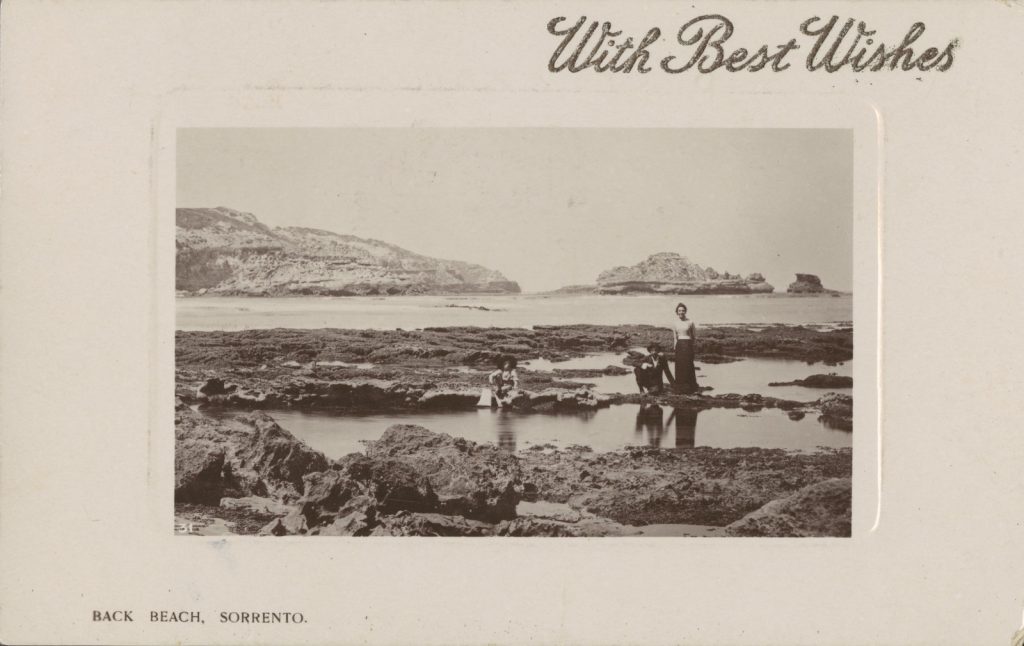


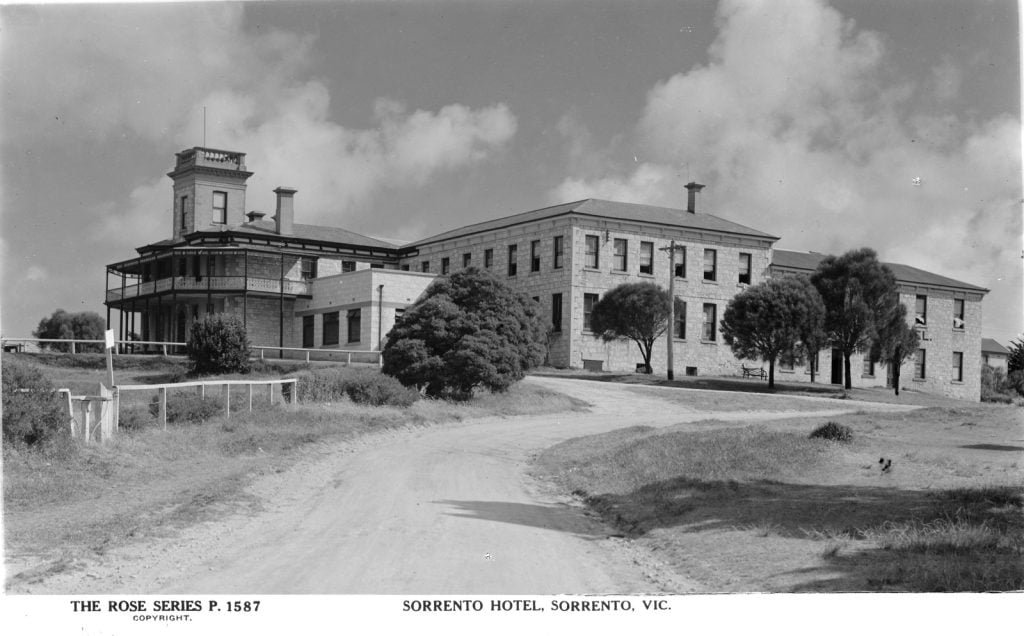
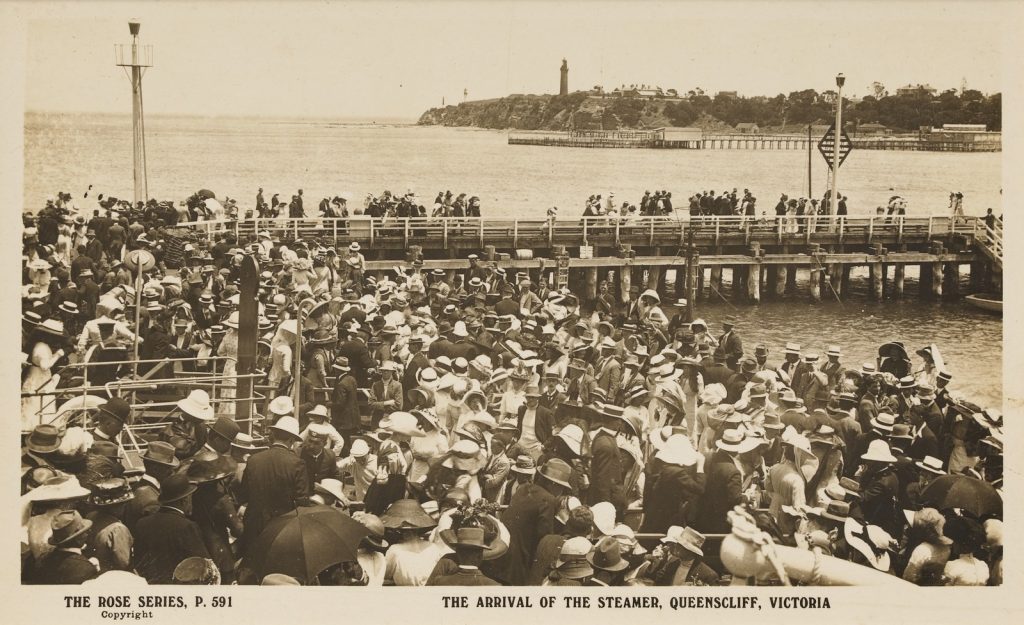
Melbourne beaches
Browsing through the postcard collection, it’s striking how rugged and undeveloped the land around our suburban beaches once was. From the late 1880s, the area between Sandringham and Beaumaris became a beach resort for Melburnians escaping from the city. A horse-drawn tram departed from Sandringham, making this part of the bay a desirable holiday destination. The area around Black Rock, in particular, became a popular destination, filled with tents, bungalows and holiday houses.3
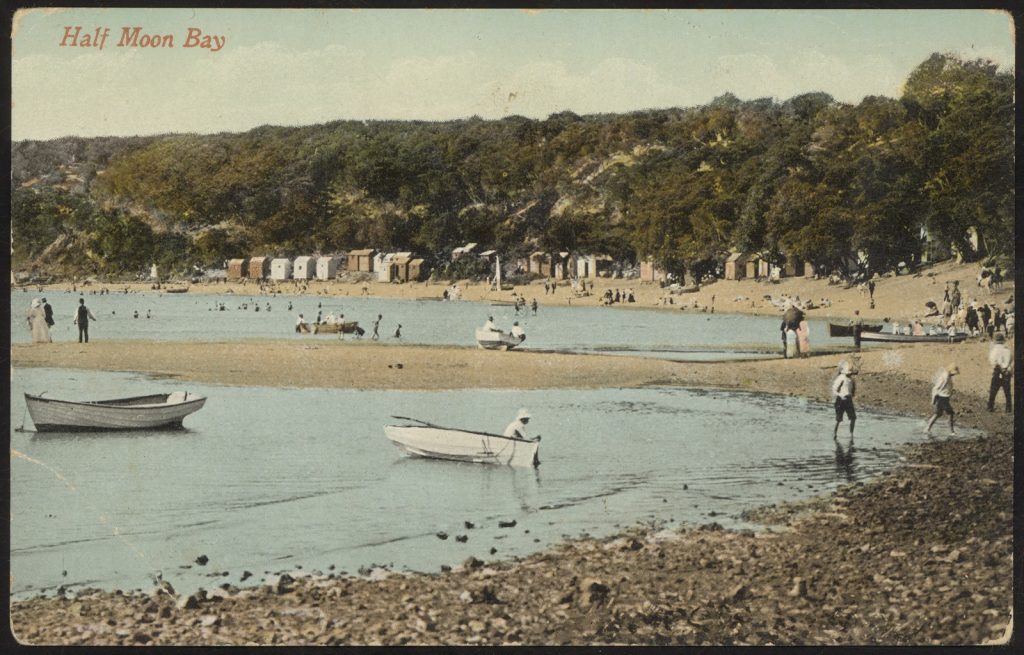
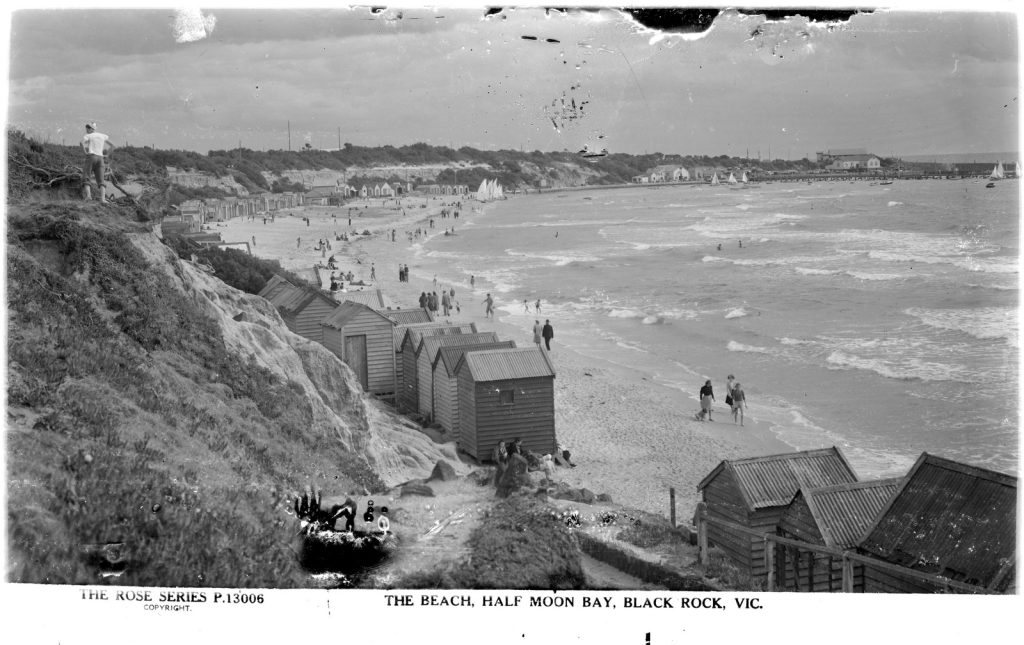

Bathing boxes
Something that stands out when viewing these postcards is how many beaches featured bathing boxes. While these are usually associated with Brighton and the Mornington Peninsula, beaches such as Point Lonsdale, Lorne, and Port Fairy all had bathing boxes along the foreshore. The bathing boxes were a successor to the earlier ‘bathing machines’ – a kind of bathing box on wheels, that allowed people to bathe privately in the sea.4 Bathing boxes were seen as a status symbol, and allowed swimmers to change in private, while also providing a place for ladies ‘to rest in the heat of the day’. Eventually, however, most disappeared, being the victims of storms, high tides, vandals and changing attitudes to modesty.5

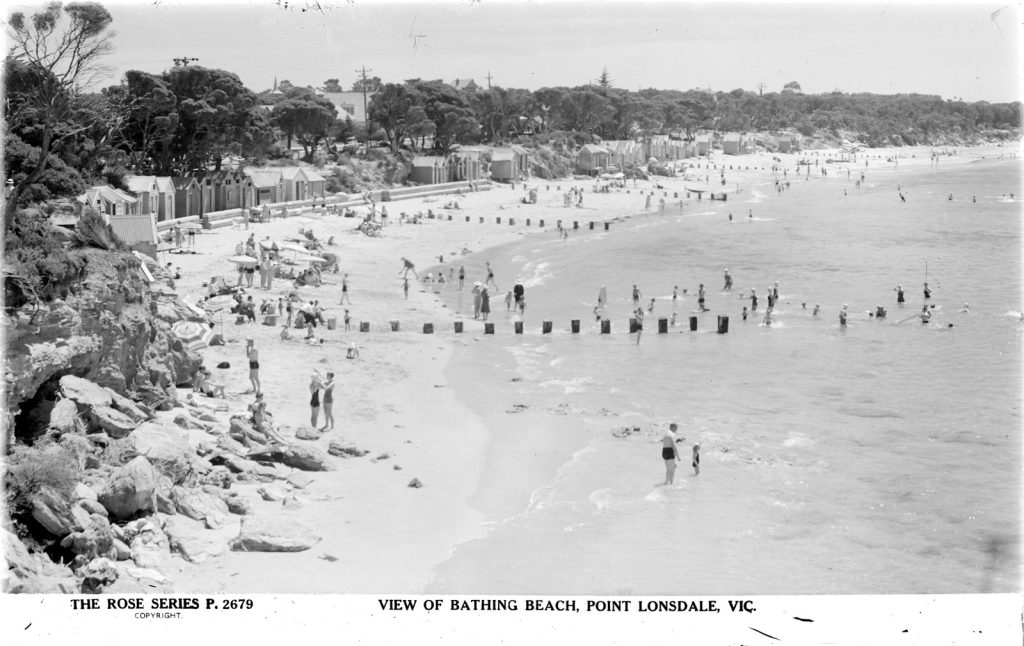
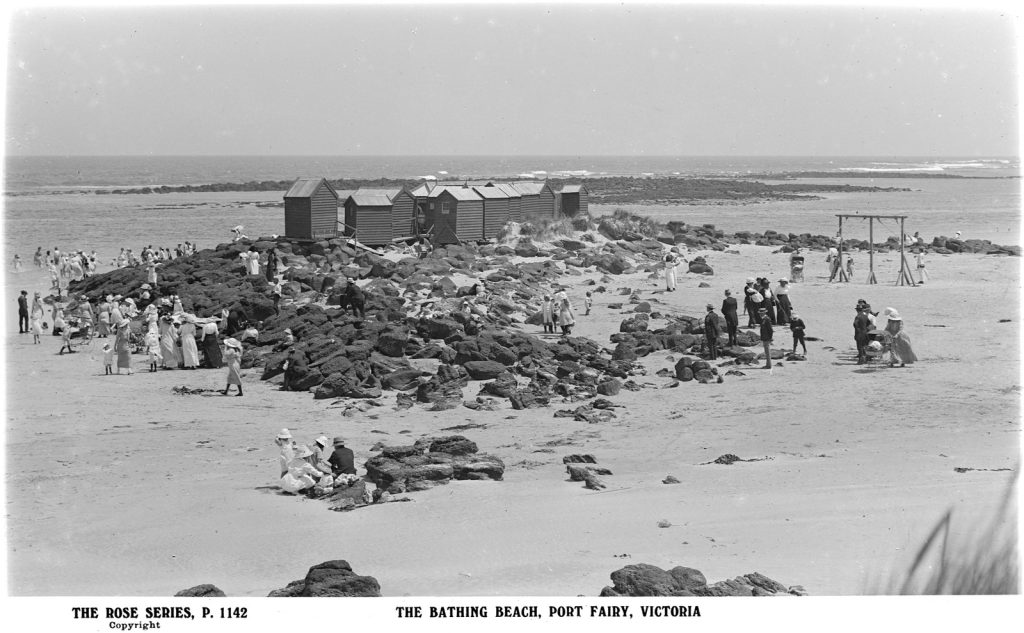
The examples above are just a selection of the many wonderful postcards in State Library Victoria’s collection. To discover more, try searching the catalogue for a place name along with the word postcards. Many of the postcards in our collection are out of copyright and can be downloaded. You could even print some of these and send a ‘vintage’ postcard from your next Victorian beach holiday.
You may also like
References
- eMelbourne, 2008, Sorrento, viewed 29 October 2022,
<https://www.emelbourne.net.au/biogs/EM01399b.htm> - Inglis, A, 1999, Beside the seaside, Melbourne University Press, Carlton South, p12
- eMelbourne, 2008, Black Rock, viewed 18 October 2022, <https://www.emelbourne.net.au/biogs/EM00198b.htm>
- Wells, L, 1982, Sunny memories : Australians at the seaside, Greenhouse Publications, Richmond, p70
- As above, p74

